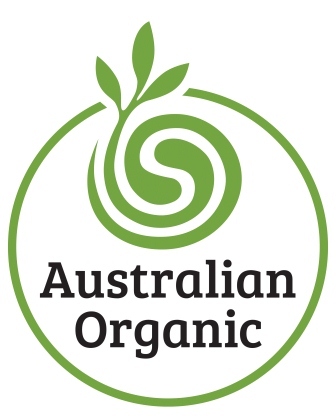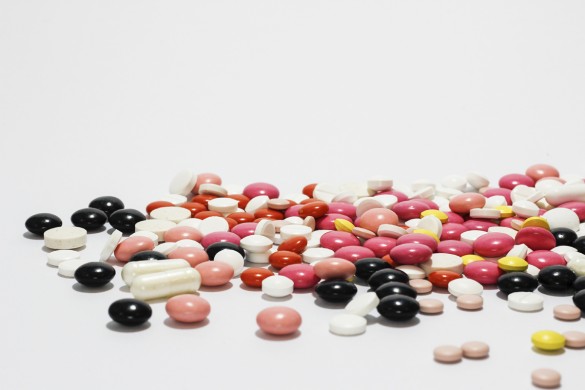By Dr Senani Wijesena – 26/06/2016
Introduction
The Australian organic food industry is booming. It is currently worth around $500 million per year domestically and a further $350 million per year in exports. In 2014, the retail value of the organic market was estimated to be at least $1.7 billion. Consumer demand for organic food is growing at a rate of 20–30 per cent per year, with retail sales increasing 670 per cent between 1990 and 2001–02. It is estimated that more than six out of every ten Australian households now buy organic foods on occasion. Consumers generally perceive these foods to be healthier and safer for themselves and the environment.
Definition of Organic
Organic food, by definition is produced by a farming system that avoids the use of chemical fertilizers, pesticides, herbicides, irradiation, live stock feed additives, genetically modified organisms (GMO’s) and growth regulators. Further to this, animals that produce meat, poultry, eggs, and dairy products are not given antibiotics or growth hormones and must comply with particular housing and breeding conditions (not caged, pasture fed).

Throughout the world, including Europe, Asia, U.S.A and Australia, food products, vegetables, fruits, animal produce, grains, seeds and beverages are certified as organic through a strict procedure to guarantee food quality to consumers. In Australia, organic food is regulated and evaluated by seven different organizations, with Australian Certified Organic Standard being the most well known (and recognized by the bud logo), which has high international reputation. Other well known worldwide organic certification standards include NASAA certified organic and USDA organic.
Organic agriculture works towards environmentally, socially and economically sustainable production that relies on crop rotation, animal and plant manures, natural fertilizers, some hand weeding and biological pest control. As a result there is less contamination of waterways with chemical fertilizer and nitrates, which minimizes problems with salinity and blue/green algae (dead water zones) that occur with traditional farming methods.
Crop rotation is used in the organic growing process (the growing of different crops in succession on a piece of land to avoid exhausting the soil and to control weeds, pests, and disease) and this prevents depletion of nutrients from the soil and allows maintenance of high nutrient content of produce. Certain naturally occurring pesticides, including pyrethrins, light oils, copper and sulphur, and biological substances such as the bacteria, Bacillus thuringiensis, are permitted for use in organic farming.
Organic food and better nutrition
Reviews of multiple studies show that organic varieties of food do provide significantly greater levels of vitamin C (27% higher), iron (21% higher), magnesium (29% higher), and phosphorus than non-organic varieties of the same foods. In addition, with the exception of wheat, oats, and wine, organic foods typically provide greater levels of a number of important antioxidant phytochemicals (anthocyanins, flavonoids, and carotenoids) that have been shown in the laboratory to inhibit toxins and the proliferation of certain cancer cell lines.
Several studies, including a Californian study and a French study comparing organic and non-organic tomato farming show that organic varieties have higher levels of vitamin C, carotenoids (lycopene), and polyphenols than conventionally-raised tomatoes. The carotenoid lycopene has been shown to help reduce cancer risk.
The anthocyanin compounds in berries have been shown to improve neuronal (nerve) and cognitive brain functions and ocular (eye) health and protect genomic DNA integrity. Higher vitamin C concentrations were found in organic leafy vegetables, such as spinach, lettuce, and chard versus the same conventionally produced vegetables in 21 of 36 (58%) studies.
Numerous factors, apart from organic versus inorganic growing, influence the amount of vitamins and phytochemicals (phenols, flavonoids, carotenoids, etc.) in a crop. These factors include the weather (affecting crops year-to-year), specific environmental conditions from one farm to the next (microclimates), soil condition, etc. It has been found that the longer the soil has been worked using organic methods, the greater the nutritional difference from conventionally grown plots.
Some studies have found lower nitrate content (by 15%) in organic foods versus conventionally grown foods, which is potentially desirable because of the association of nitrates with increased risk of gastrointestinal cancer and, in infants, methemoglobinemia.
Organic produce and pesticides/chemicals
Food may be the primary source of exposure to contaminants in humans from multiple chemical classes such as metals (mercury, lead, arsenic), persistent organic pollutants (POPs such as dioxin, DDT, dieldrin, chlordane), and pesticides (chlorpyrifos, permethrin, endosulfan). Of these, organic foods are lower in dioxins, persistent organic pollutants and have no pesticides used in their production. Pesticides, of which there are about 400 different types, including insecticides, herbicides and fungicides, are widely used in standard Australian agriculture. They are used to repel or kill rodents, fungi, insects, and “weeds” that undermine intensive farming. Persistent organic pollutants are hazardous organic chemical compounds that are resistant to biodegradation and thus remains in the environment for a long period of time.
Although organic farming methods prohibit the use of synthetic pesticides, organic foods are not necessarily completely chemical free. They may be grown on land not previously used for organic food production and, therefore, might contain chemical residues. In addition, pesticides used in non-organic farming land may drift across to adjacent organic farms as they become air borne and contaminate produce. This exposure occurs from compounds that settle to the ground (soil) during both the growing season and the off-season, and exposure can continue during transport and distribution. To protect against this, some organic farms use covers on crops or growing occurs in greenhouses. To qualify as organic, however, crops must be produced on farms that have not used most synthetic pesticides, herbicides, and fertilizer for 3 years before harvest and have a sufficient buffer zone to decrease contamination from adjacent lands.
Despite possible indirect contamination, however, the pesticide residues in organic food are considerably lower than those found in conventional foods produced with synthetic chemicals. A review that utilized USDA data, along with data from Consumers Union and the Marketplace Surveillance Program of the California Department of Pesticide Regulation, reported that organically raised foods had one-third the amount of chemical residues found in conventionally raised foods. This has also been found to be the case in foods grown in countries outside the U.S.A.
In the state of Victoria, Australia the ‘clean’ status of organic produce was recently confirmed by a rigorous chemical monitoring survey conducted by the Department of Primary Industries which found that more than 99% of tested produce detected no chemical residues at all, and all produce tested met the maximum residue limits set by FSANZ (food standards Australia New Zealand).
Data from the Pesticide Data Program (USA) reveals conventional produce with the highest percentages of positive (insecticide residue) findings were: celery (96%), pears (95%), apples (94%), peaches (93%), strawberries (91%), oranges (85%), spinach (84%), potatoes (81%), grapes (78%), and cucumbers (74%). A recent study found that an average of 82 percent of conventional fruits were positive for insecticide residues compared to 23 percent of organic fruits. Regarding vegetables, 65 percent of conventionally grown produce tested positive, compared to 23 percent for organic vegetables. These study results apply also to crops grown in Australia and the UK, which show similar findings or better.
Not only have repeated studies shown that organic foods have lower levels of insecticides, clear evidence also indicates reduced pesticide levels in the consumers of organic foods. In studies, children eating organic foods had a six-fold lower level of organophosphate pesticide residues in their urine than those who ate more conventionally. The same research group tested preschoolers before and after changing their diets from conventionally grown to organic foods. When the shift was made to organic diets the urinary levels of chemicals, malathion and chlorpyrifos became undetectable until their conventional diets were restored.
Effect of pesticides and synthetic chemicals from food on human health
Pesticides and cancer
A recent review of human data has found significant positive associations between pesticide exposure and solid tumours, haematological cancers such as lymphoma and leukemia and genotoxic effects (chemical damage to genes).
Occupational (agricultural worker) pesticide exposure has been linked, albeit not conclusively, with a higher risk of certain cancers, particularly non-Hodgkin lymphoma, soft tissue sarcoma, and breast cancer. Several researchers have noted a lack of studies examining organic food consumption and pesticide exposure in relation to health outcomes, and to present knowledge, very few studies have investigated organic food consumption in relation to cancer risk. Exposure to pesticides in the general population, excluding occupational and accidental exposure, however, is mainly via residues on food. In general, as pesticide burden on the body is accumulative, it is important to avoid exposure from all sources, including food, and the environment. One recent study found a 21% lower risk of non-Hodgkin lymphoma in women who reported usually or always eating organic food compared with women who reported never eating organic food. More studies are warranted.
The International Agency for Research on Cancer has classified some of the detected pesticides, such as DDT (banned in Australia since 1987) and chlorothalonil, as possibly carcinogenic to humans.
Chlorothalonil is a chemical fungicide currently used in Australia and world-wide to control fungal diseases on almonds, apricots, bananas, carrots, celery, cherries, faba beans, grapes, onions, peaches, peanuts, peas, plums, potatoes, tomatoes, turf and vegetables. Chlorothalonil has been categorized as a Group B2 “probable human carcinogen”, based on observations of cancers and tumors of the kidneys and fore-stomachs in laboratory animals fed diets containing chlorothalonil and is a cause for concern in humans. Human studies evaluating health effects including risk of cancer of ingestion/exposure are therefore warranted.
The most potent dioxin related chemical, TCDD, is also classified by the International Agency for Research on Cancer as a group I carcinogen (known to cause cancer in humans). TCDD increases the risk of all cancers including soft-tissue sarcomas, lung and liver cancers, and breast cancer. Dioxins occur in animal products such as meat, fish and shellfish, eggs, milk and has been related to livestock fed contaminated feed that then stores in the animal’s fat tissue. Dioxin also occurs naturally in the environment due to environmental pollution as well as pesticides and fertilizers and industrial sources and is difficult to avoid. Dioxin levels although lower in plants, water and air, than animal sources (accumulates up the food chain), may contaminate vegetables and fruits if sprayed with pesticides. Generally though vegan diets contain much less dioxin than non-vegetarian diets. Although studies have not been undertaken comparing dioxin levels in organic animal produce versus non-organic, it would be reasonable to assume that, as organic livestock would not be consuming as many dioxins through their feed, their milk and meat products would similarly show lower dioxin levels. Dioxins are found in many chlorinated pesticides still in use today. Long term exposure to dioxins are also known to cause impairment to the immune system and affect the developing endocrine, reproductive and nervous system in the fetus/adult exposed.
DDT (another insecticide) that was in use in Australian agriculture and banned in 1987, however, still causes adverse human health effects including increased risk of cancer and hormonal imbalance as it persists in the environment and animal and human fat stores for a lifetime. Click on DDT for more information.
Oestrogen and cancer risk in hormone treated animal produce
Hormonal growth promotants (HGPs) such as oestrogen, progesterone and testosterone or synthetic alternatives have been used in Australia for more than 30 years in approximately 40% of cattle to accelerate weight gain and meat production. HGPs are registered for use in many countries including Australia, New Zealand, the USA, Canada, South Africa and Japan, although Europe has banned its use. The poultry/lamb industry in Australia, however state that hormones have not been used in their production since the 1960’s. Non-organic meats (including poultry, eggs, dairy, cattle etc) are still exposed to pesticides and fertilizers in livestock feed, however, which have oestrogenic effects in produce.
In addition to pesticides, it has been postulated that ingested estrogen in food derived from sex-hormone-treated animals may play a role in earlier development of puberty and increasing risk of breast cancer. However, no studies have supported this hypothesis in humans. Studies in animals demonstrating carcinogenic and teratogenic effects (birth defects) of estrogens used high doses of estradiol and cannot be extrapolated to the low doses of sex steroids found in the food supply.
An interesting large 7 year prospective longitudinal study, however, in the 1960’s and 1970’s has found an association between red meat consumption in high school girls and the development of hormone receptor positive breast cancer later in life (premenopausal). This study was limited by a number of factors including inability to control confounding factors therefore further studies on this are needed.
Recent literature on sex steroid (hormone) concentrations and their physiologic roles during childhood indicate that children are extremely sensitive to estradiol (from food/environment) and may respond with increased growth and/or breast development even at serum concentrations below the current detection limits.
Thyroid and Pesticides
Thyroid hormone production can also be inhibited by about ten endocrine disruptor pesticides leading to an underactive thyroid and include amitrole, cyhalothrin, fipronil, ioxynil, maneb, mancozeb, pentachloronitro-benzene, prodiamine, pyrimethanil, thiazopyr, ziram, zineb.
Children and pesticide exposure risk
A recent review of pesticides and children indicates that in addition to causing reproductive effects, pesticide residues are implicated in causing childhood cancer, neurological and neurobehavioral (ADHD) and endocrine/hormone effects.
Animal studies show that organochlorine pesticides—such as DDE—are neurotoxic, cause oxidative stress, and damage the brain’s dopaminergic (neurotransmitter) system.
A U.S. study evaluating the relationship between cognitive development and prenatal pesticide exposures found deficits of seven IQ points in 7-year-old children in the highest quintile of pesticide exposure, compared with children in the lowest quintile, as measured by maternal urinary pesticide metabolite levels during pregnancy. Results were comparable in other studies.
Researchers are finding in animal studies that pesticide exposures (including to methoxychlor, DEET, permethrin, and vinclozolin, as well as dioxin) during pregnancy can induce epigenetic changes (gene modification) that alter stress responses and disease rates in future generations with tendency to develop a variety of adult-onset diseases earlier than normal. Animal studies are often under taken as an indication of possible effects in humans and findings such as this should give cause for concern.
Children appear to be particularly vulnerable to the effects of pesticides. They have less developed detoxification pathways – newborn infants have low levels of the enzyme paraoxanase-1, which detoxifies organophosphate pesticides. Fetal and infant exposure is also greater due to maternal fat reserves that store chemicals such as pesticides that may circulate to the developing fetus and breast fed infant from the mother. Children, in addition, have a longer life expectancy, permitting greater time in which to develop diseases with long latency periods.
These factors led to the 1996 revision of the USA Federal Fungicide, Insecticide and Rodenticide Act to include an additional 10-fold margin of safety for exposure to pesticide chemical residues in infants and children. Children may be at greater risk of pesticide exposure as they eat and drink more per kilogram of body weight than adults and their diets are often rich in foods such as fresh fruit, vegetables and juices, which contain higher levels of pesticides.
While current data suggests that the immunological, physiological, nutritional and psychological benefits of breastfeeding far outweigh any risk from contaminants, it is clear that breast milk is commonly contaminated with high levels of pesticides. Over the past few decades, however, levels of organochlorine chemicals, PCBs and dioxins have declined in breast milk in countries where these chemicals have been banned or otherwise regulated.
Other effects of pesticide exposure on human health
Based on epidemiological studies since 2000, it has been concluded that pesticide exposure may affect spermatogenesis leading to poor semen quality and reduced male fertility. Studies have also demonstrated improved sperm quality in men who consumed organic compared to conventional food that may provide indirect evidence that organic foods may have health benefits on improved male fertility.
Pesticides have been found to also impact on mental and emotional functioning, the nervous system (causing neurodegenerative disease such as Alzheimer’s, Parkinson’s disease) and the reproductive system (causing birth defects, infertility, fetal death, and intrauterine growth retardation).
Of the banned pesticides, chlordane exposure has been associated with cancers, neurotoxicity and low birth weight. Dieldrin has been linked to Parkinson’s disease and cancer. DDE is genotoxic and an endocrine disruptor. TCDD, the most toxic of the dioxin congeners, is an endocrine disruptor, is known to disrupt the developing immune, nervous, and reproductive systems, and has been shown to be teratogenic, mutagenic, carcinogenic, immunotoxic, and hepatotoxic in animal models.
Wild caught seafood versus farmed seafood
GMO (genetically modified organism) foods and health effects
Conclusion
While it may be difficult to conclusively demonstrate direct health benefits from an organic diet, consuming organic food and wild caught rather than farmed seafood is clearly one way to reduce exposure to potentially harmful pesticides and genetically modified (foreign) proteins/DNA as well as obtain higher nutrient content. It seems unlikely that direct evidence will be forthcoming as rigorous randomized controlled trials comparing the health effects of organic versus conventional food are difficult to design. Such trials would ideally need to span many decades or generations and involve large groups of people fed on identical diets using either organic or non-organically produced food.
References
- Mary H Ward. Too Much of a Good Thing? Nitrate from Nitrogen Fertilizers and Cancer. President’s Cancer Panel – October 21, 2008 Interdiscip Toxicol. 2009 Mar; 2(1): 1–12.
- Wasim Aktar, Dwaipayan Sengupta and Ashim Chowdhury. Impact of pesticides use in agriculture: their benefits and hazards. Int J Biol Sci. 2010; 6(6): 590–598.
- Joël Spiroux de Vendômois,1Dominique Cellier,Emilie Clair Robin Mesnage and Gilles-Eric Séralini Debate on GMOs Health Risks after Statistical Findings in Regulatory Tests. Ghana Med J. 2014 Jun; 48(2): 123–125.
- Dr George Amofah. Recommendations from a Meeting on Health Implications of Genetically Modified Organism (GMO). Environ Health Perspect. 2005 May; 113(5): 552–556.
- Jeffery A. Foran,1 David O. Carpenter,M. Coreen Hamilton, Barbara A. Knuth and Steven J. Schwager. Risk-Based Consumption Advice for Farmed Atlantic and Wild Pacific Salmon Contaminated with Dioxins and Dioxin-like Compounds. PLoS One. 2012; 7(8): e42724.
- Alejandro H. Buschmann, Alexandra Tomova,Alejandra López,1Miguel A. Maldonado, Luis A. Henríquez, Larisa Ivanova, Fred Moy, Henry P. Godfrey, and Felipe C. Cabello. Salmon Aquaculture and Antimicrobial Resistance in the Marine Environment. Australian Family Physician Vol. 36, No. 12, December 2007 1003.
- THEME Environmental toxins and health – the health impact of pesticides evidence that organic food is a healthier option.
- http://isaaa.org/resources/publications/pocketk/10/default.asp
- Thongprakaisang S,Thiantanawat A,Rangkadilok N, Suriyo T, Satayavivad J. Glyphosate induces human breast cancer cells growth via estrogen receptors. Food Chem Toxicol. 2013 Sep;59:129-36.
- Alejandra Paganelli, Victoria Gnazzo, Helena Acosta, Silvia L. López, and Andrés E. Carrasco. Glyphosate-Based Herbicides Produce Teratogenic Effects on Vertebrates by Impairing Retinoic Acid Signaling. Res. Toxicol.,2010,23 (10), p 1586–1595
- David C. Holzman. Organic Food Conclusions Don’t Tell the Whole Story Environ Health Perspect. 2012 Dec; 120(12): a45
- Mark Cohen. Environmental toxins and Health Australian Family Physician Vol. 36, No. 12, December 2007
- Wissem Mnif,1,2 Aziza Ibn Hadj Hassine,1 Aicha Bouaziz,1 Aghleb Bartegi,3 Olivier Thomas,4 and Benoit Roig. Effect of Endocrine Disruptor Pesticides: A Review. Int J Environ Res Public Health. 2011 Jun; 8(6): 2265–2303
- K E BradburyA Balkwill, E A Spencer, A W Roddam, G K Reeves, J Green, T J Key, V Beral, K Pirie, and The Million Women Study Collaborators. Organic food consumption and the incidence of cancer in a large prospective study of women in the United Kingdom. Review Br J Cancer. 2014 Apr 29; 110(9): 2321–2326
- Cancer and non-cancer health effects from food contaminant exposures for children and adults in California: a risk assessment Rainbow Vogt, Deborah Bennett, Diana Cassady, Joshua Frost, Beate Ritz, and Irva Hertz-Picciotto. United Kingdom Environ Health. 2012; 11: 83.
- Sandor Spisak et al. Complete Genes May Pass from Food to Human Blood. Published July 30th, 2013. PLOS.
- Jeffery A. Foran, David O. Carpenter, M. Coreen Hamilton, Barbara A. Knuth, and Steven J. Schwager. Risk-Based Consumption Advice for Farmed Atlantic and Wild Pacific Salmon Contaminated with Dioxins and Dioxin-like Compounds Environ Health Perspect. 2005 May; 113(5): 552–556.
- http://austorganic.com/australian-certified-organic-standard2/







